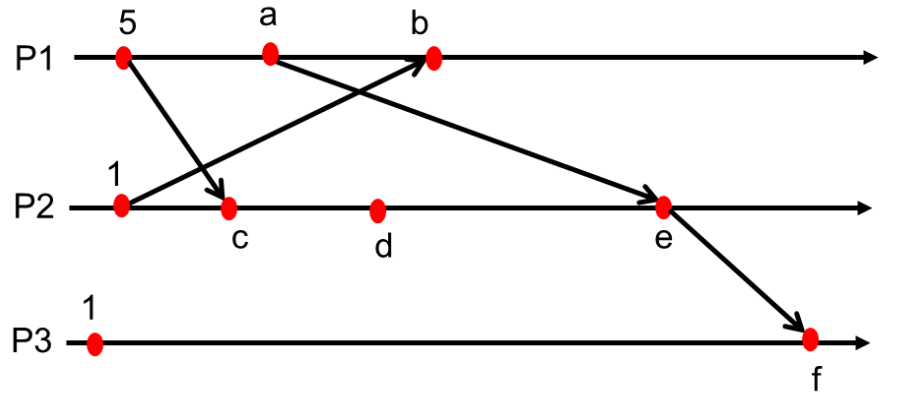This set of MCQ(multiple choice questions) focuses on the Cloud Computing and Distributed Systems NPTEL Week 4 Solutions 2023.
Cloud computing is the on-demand delivery of computations, storage, applications, and other IT resources through a cloud services platform over the internet with pay-as-you-go business model. Today’s Cloud computing systems are built using fundamental principles and models of distributed systems. This course provides an in-depth understanding of distributed computing “concepts”, distributed algorithms, and the techniques, that underlie today’s cloud computing technologies. The cloud computing and distributed systems concepts and models covered in course includes: virtualization, cloud storage: key-value/NoSQL stores, cloud networking,fault-tolerance cloud using PAXOS, peer-to-peer systems, classical distributed algorithms such as leader election, time, ordering in distributed systems, distributed mutual exclusion, distributed algorithms for failures and recovery approaches, emerging areas of big data and many more. And while discussing the concepts and techniques, we will also look at aspects of industry systems such as Apache Spark, Google’s Chubby, Apache Zookeeper, HBase, MapReduce, Apache Cassandra, Google’s B4, Microsoft’s Swan and many others. Upon completing this course, students will have intimate knowledge about the internals of cloud computing and how the distributed systems concepts work inside clouds.
Course layout
Answers COMING SOON! Kindly Wait!
Week 1: Assignment answers
Week 2: Assignment answers
Week 3: Assignment answers
Week 4: Assignment answers
Week 5: Assignment answers
Week 6: Assignment answers
Week 7: Assignment answers
Week 8: Assignment answers
Week 9: Assignment answers
Week 10: Assignment answers
Week 11: Assignment answers
Week 12: Assignment answers
NOTE: You can check your answer immediately by clicking show answer button. Cloud Computing and Distributed Systems NPTEL Week 4 Solutions 2023 Assignment Solution” contains 10 questions.
Now, start attempting the quiz.
Cloud Computing and Distributed Systems NPTEL Week 4 Solutions 2023
Q1. Assign Lamport timestamps to the events (a, b, c, d, e, f) as shown in the figure:

a. a: 6, b: 2, c: 6, d: 7, e: 7, f: 8
b. a: 1, b: 2, c: 2, d: 3, e: 4, f: 2
c. a: 6, b: 7, c: 6, d: 7, e: 7, f: 8
d. a: 6, b: 7, c: 6, d: 7, e: 8, f: 9
Answer: a
Q2. Which event is concurrent with the vector clock (2, 7, 3) ?
a. (4, 9, 4)
b. (1, 7, 4)
c. (1, 5, 1)
d. (5, 7, 3)
Answer: d
Q3. A client gets a timestamp of 3:12:30.500 from a time server. The elapsed time between the request and response was 20 msec (0.020 sec). The current time on the client is 3:12:30.510. Using Cristian’s algorithm i.e. server time + ½(elapsed time), what is the time set on the client ?
a. 3:12:30.480
b. 3:12:30.490
c. 3:12:30.510
d. 3:12:30.520
Answer: b
Q4. A client’s clock reads 3:20:00. The server’s clock reads 3:10:00 when they synchronize using the Berkeley algorithm. Assume message delays are negligible. What is the time at the client after synchronization ?
a. 3:20:00
b. 3:10:00
c. 6:30:00
d. 3:15:00
Answer: d
Q5. True or False ? DTP (Datacenter Time Protocol) uses the physical layer of network devices to implement a decentralized clock synchronization protocol.
a. True
b. False
Answer: b
Q6. The properties hold for quorums in a coterie are:
a. Total ordered set property
b. Intersection property
c. Minimality property
d. Both Intersection and Minimality property
Answer: d
Q7. True or False ? The Chandy-Lamport global snapshot algorithm works correctly for non-FIFO channels.
a. True
b. False
Answer: b
Q8. Find out the correct property to solve mutual exclusion in distributed system:
Property 1: At most one process executes in critical section at any time
Property 2: Every request for a critical section is granted eventually
Property 3: Requests are granted in the order they were made
a. Property 1: Liveness, Property 2: Fairness, Property 3: Safety
b. Property 1: Safety, Property 2: Fairness, Property 3: Liveness
c. Property 1: Fairness, Property 2: Safety, Property 3: Liveness
d. Property 1: Safety, Property 2: Liveness, Property 3: Fairness
Answer: b
Q9. Consider the following statements:
Statement 1: Lamport’s algorithm achieves mutual exclusion.
Statement 2: Lamport’s algorithm is fair.
a. Only statement 1 is true
b. Only statement 2 is true
c. Both statements are true
d. Both statements are false
Answer: a
Q10. ___________________provides Advisory locks only and doesn’t guarantee mutual exclusion unless every client checks lock before accessing resource.
a. Paxos
b. Google’s Chubby
c. Cassandra
d. Microsoft Azure
Answer: b
<< Previous- Cloud Computing and Distributed Systems Week 3 Assignment Solutions
>> Next- Cloud Computing and Distributed Systems Week 5 Assignment Solutions
DISCLAIMER: Use these answers only for the reference purpose. Quizermania doesn't claim these answers to be 100% correct. So, make sure you submit your assignments on the basis of your knowledge.
For discussion about any question, join the below comment section. And get the solution of your query. Also, try to share your thoughts about the topics covered in this particular quiz.
Checkout for more NPTEL Courses: Click Here!
